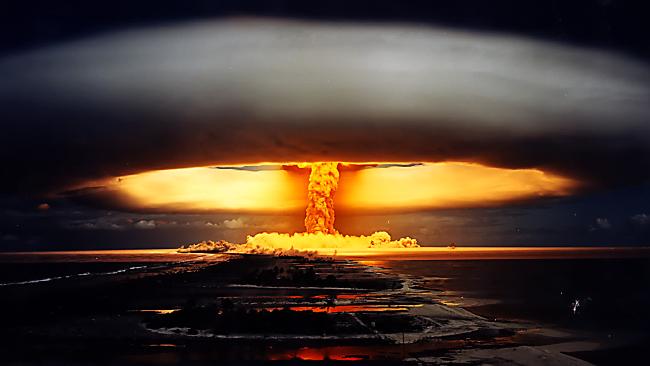In the past few days, Western media sources have reported, based on a revelation from the Chairman of the House Intelligence Committee of the U.S. Congress, that Russia may be developing and deploying a nuclear space weapon. Or maybe it is just a nuclear-powered rocket for use in space. These are two very different developments, one that is very troubling, and the other a potential revolution in propulsive choices for space travel.
If an anti-satellite weapon, its use would destroy hundreds if not thousands of satellites in orbit including those from Russia making low-Earth orbit unusable for the foreseeable future. So much for Starlink’s constellation of telecommunications satellites and its many competitors. And so much for the International Space Station (ISS).
The speculation is that Russia is putting a nuclear bomb into low-Earth orbit. But some are saying the Russians could be deploying a nuclear-powered satellite or a nuclear-powered orbiting platform that could be weaponized. If a bomb or nuclear weapon platform, the Russians would violate the United Nations’ 1967 Outer Space Treaty. They are the successor state to the USSR that along with the United States and other countries agreed to the peaceful use of outer space, the Moon and other celestial bodies.
Maybe all of this is a distraction from the reality that the U.S. Pentagon is on a new path to counter Earth-based Russian progress on weapons development with its nuclear plans. If you haven’t heard about the nuclear gravity bomb, it’s because the U.S. government doesn’t talk up a weapons program that is designed to kill millions in seconds.
The nuclear gravity bomb being developed for deployment is the B61-13. It can be launched from aircraft. A directed version could be developed for deployment on land-based missiles or submarines. The B61-13 will minimally have the destructive force of 24 Hiroshima atom bombs. The Hiroshima bomb killed 140,000. Multiply that number by 24. That’s over 3.3 million killed, and millions more injured or dying from radiation sickness.
The U.S. has been undergoing a massive rebuilding of its nuclear arsenal. What’s the justification? Russia, China, the United Kingdom, France, India, Pakistan, Israel and North Korea all have nuclear bombs capable of killing millions. So the U.S. needs to replace its million-killing weapons with new ones to keep up the pace in a scheme called Mutual Assured Destruction (MAD). The less provocative term being used is nuclear deterrence.
Stephen Young wrote about MAD in an essay that appeared in the Bulletin of the Atomic Scientists on February 13th. He stated:
“The mutual assured destruction precept of deterrence theory is ludicrous. For such a system to make sense, it would have to work perfectly and for all time. If it doesn’t, then we are all dead. What human system has ever worked perfectly for any significant length of time?”
In 1962, the U.S. detonated a nuclear bomb 400 kilometres (250 miles) above the Earth. At the time it destroyed a third of the satellites that were orbiting the planet. The U.S. continued to consider developing nuclear-armed antisatellite weapons throughout the Cold War, but the strategy was abandoned. No country since, whether a signatory to the UN treaty or not, has deployed or exploded a nuclear weapon in space.
The justification for Russia to consider nuclear weapons deployment in space could be to disrupt Starlink which the Ukraine has been using during the Russian invasion of its country. So far, Russia has been unable to disrupt the Starlink network. If they could, the Ukraine would be fighting blind.
Getting back to the B61-13 gravity bomb. Its development can only be justified if the U.S. was expecting to fight and win a nuclear confrontation with Russia, China, Iran, North Korea, or some yet-to-be-identified nuclear-armed adversaries. And why a gravity bomb? The two atom bombs dropped on Japan at the end of World War Two were gravity bombs. They are simple and relatively low-cost, although the $1.2 trillion the U.S. is spending over the next 25 years to modernize its nuclear deterrent doesn’t sound low cost to me.
One thing is certain. Anything the U.S., Russia, or China develops will be matched because that is how the MAD game is being played. Young summarizes the insanity of MAD:
“That horrible reality is the basis of the world’s security system. If everyone can kill everyone else, and no one can be safe from that threat, then—in the supreme irony of nuclear deterrence—everyone is supposed to be safe.”
















